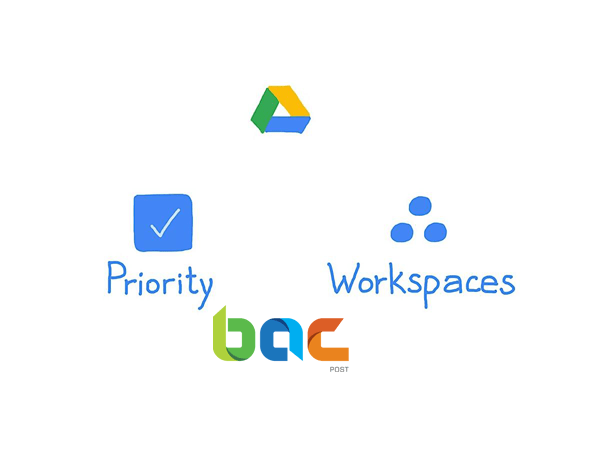Google Drive Priority proposes a short rundown of documents you may discover valuable, while Workspaces gives you a chance to assemble records from crosswise over Drive for quick access.
On the off chance that you use G Suite and Google Drive, you’re likely familiar with at least two different ways to get to files on My Drive and Team Drives. When you know the location of a file, you explore through the My Drive or Team Drive folder structure until you arrive at the file you need. When you don’t have the foggiest idea about the location of a file, you enter keywords into the Google Drive search box, at that point audit the returned results.
Google Drive Priority and Workspaces gives individuals who use G Suite two alternative ways to get and arrange Drive fils. The features are accessible to users of: G Suite Basic, Business, or Enterprise starting in March 2019. People who utilize different version of G Suite will probably access the features sometime in the future.
Google Drive Priority is a good example of Google’s AI systems put to practical use: “Here are files we think you need,” the system recommends. Additionally, when you make a Workspace, the system may propose files to add: “Include these files as well?” it inquires. Together, Priority and Workspaces should help individuals get to important files faster.
Google Drive Priority
The files on the Priority page represent to Google’s best endeavor to fill in as a smart assistant. Priority shows that Google’s system rates as pertinent for recent or upcoming work, for example, Files you’ve opened or edited recently, files imparted to you that another person edited, or files that may be identified with an up and coming meeting.
In an web browser, the files show in a horizontal row (Figure A). On a Chromebook with a screen set to 1920 x 1080 resolution, the system display six files that can be seen initially, with another four files that can be gotten to by looking through the proposed files horizontally.
Figure A

The Google Drive Android and iOS applications present Priority files in a rundown that can be looked through vertically (Figure B).
Figure B

People who use Google Cloud Search—either on the web, at https://cloudsearch.google.com/, or in the Cloud Search mobile apps for Android or iOS—may encounter comparative usefulness. The primary Cloud Search screen offers files you’ve as of late gotten to or potentially files related with upcoming meetings, as the system recommends that you may Pick Up Where You Left Off or Prepare For An Upcoming Meeting.
Google Drive Workspaces
A Workspace on Drive consists of a lot of files you choose—these filess might be any things put away on My Drive or on any Team Drive to which you approach (Figure C). My tests show that you may indicate 25 files to a Workspace.
Figure C

When you make a Workspace, and so on. You may rename, stow away, or remove a Workspace whenever. Essential note: When you remove a Workspace, the files remain—just the Workspace leaves (Figure D).
Figure D

Workspaces conceivably comprehend two critical issues. First, a Workspace gives an approach to you to assemble any combination of files. For example, you may make a Workspace for a task where you have to allude to a financial plan, an earlier year venture portrayal, and an arranging archive from an alternate undertaking. No compelling reason to move those records into another organizer. Rather, make a Workspace for quick access to the whole set.
The second issue that a Workspace may help with is Chrome tab management, particularly on desktop or laptop systems. A few people keep a tab open for each active project document. Without Workspaces, that bodes well, as it sets aside some effort to explore or scan for project files. Be that as it may, presently it bodes well to make a Workspace and add project files. When you need project file, open the Workspace to get to the file quickly.
Your practices?
On the off chance that you use G Suite, have you discovered the Priority files list valuable? On the off chance that you use Workspaces, how would you utilize that feature? Have you discovered that Workspaces gives you a chance to work with groups of filess in different wayss in comparison to you could previously? If so, how? Let me know in the comments below
How useful was this information?
Click on a star to rate it!


